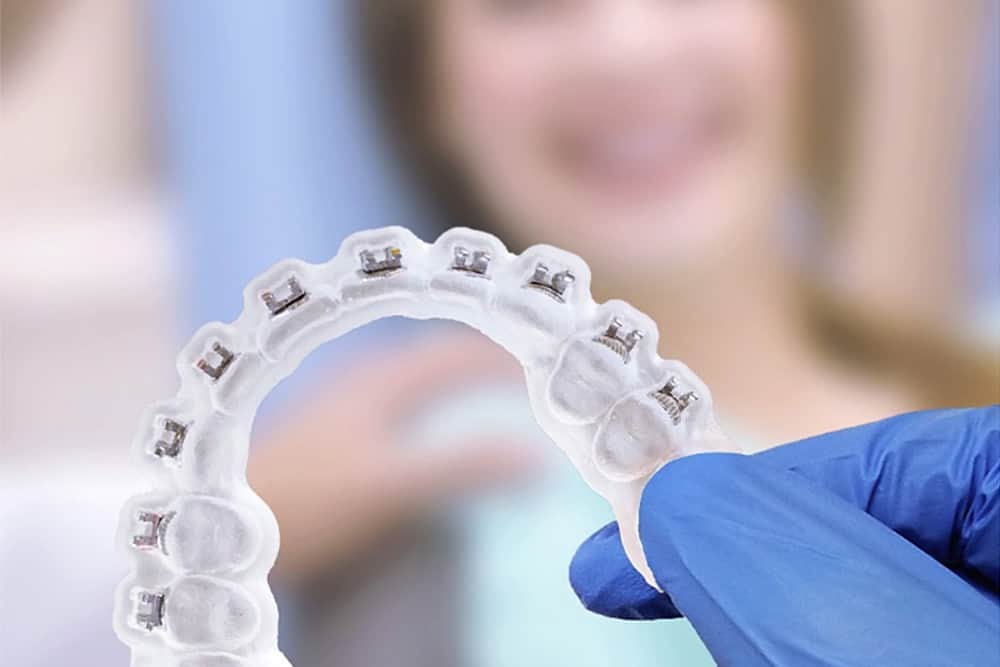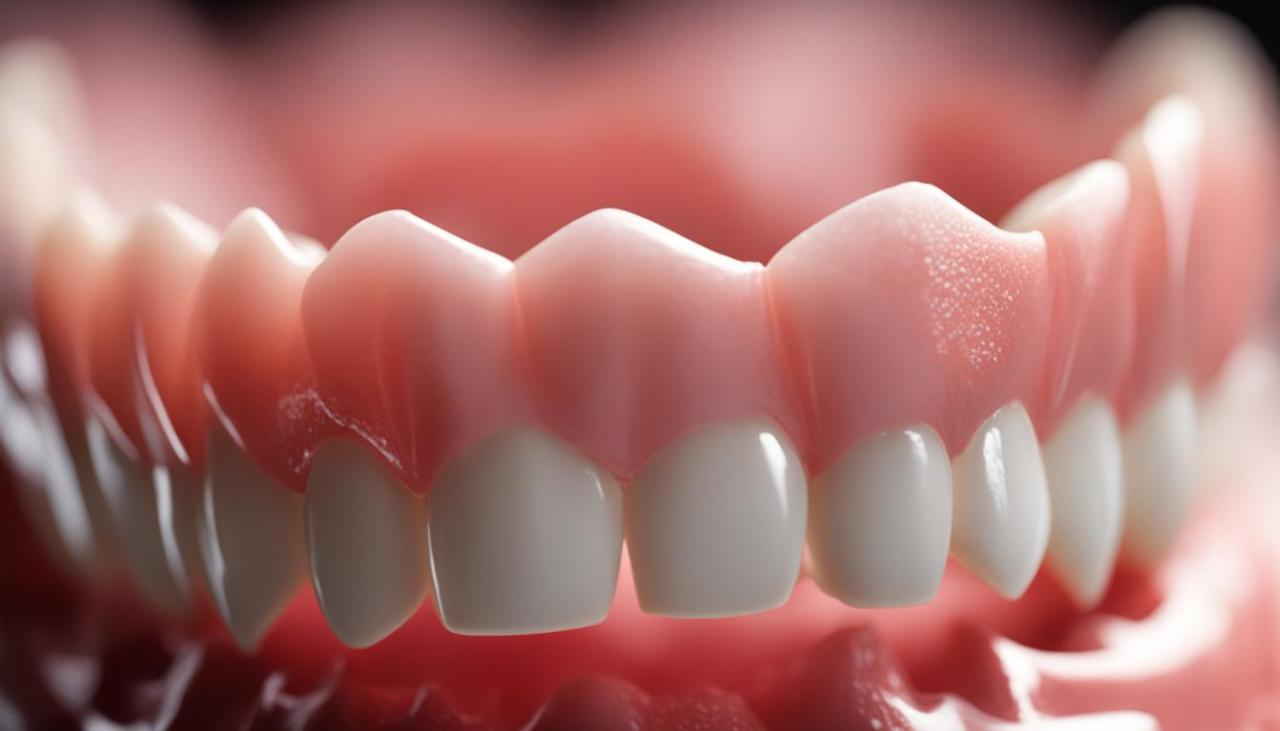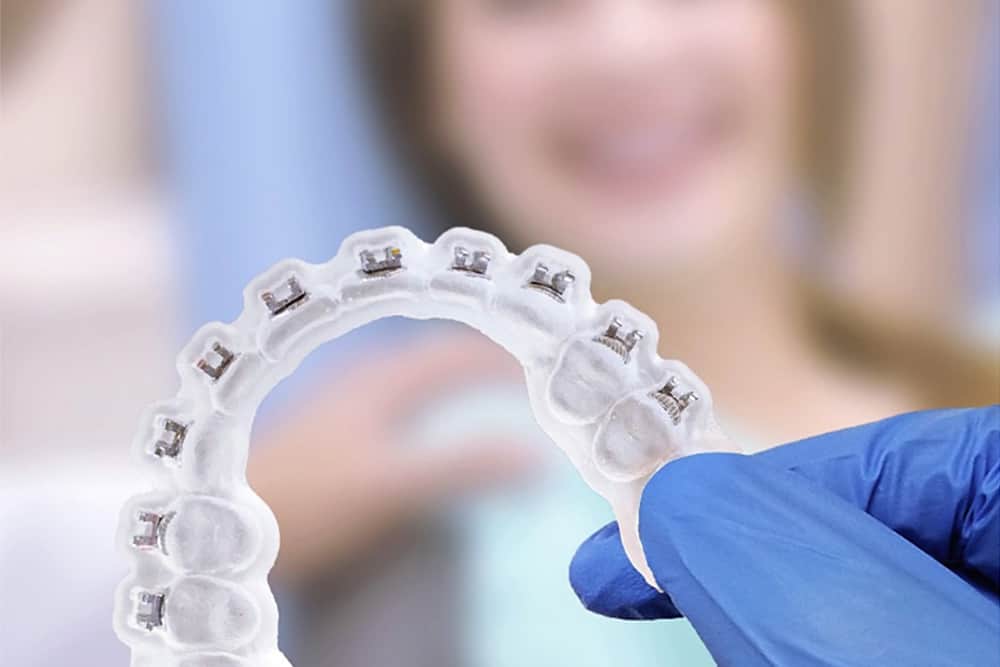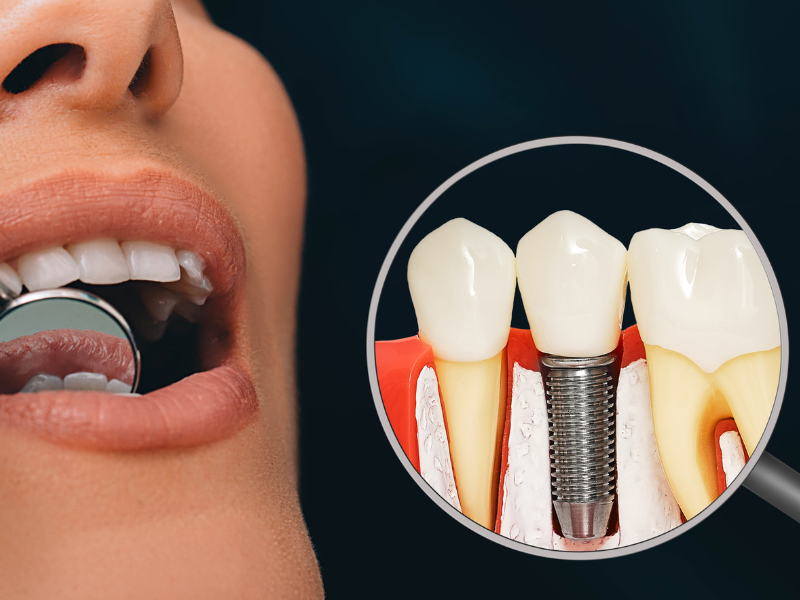New Teeth Braces Technology: A Revolution in Smile Correction
New teeth braces technology has revolutionized the way we straighten our smiles, offering a world of options beyond traditional metal braces. From virtually invisible aligners to self-ligating brackets, advancements in […]
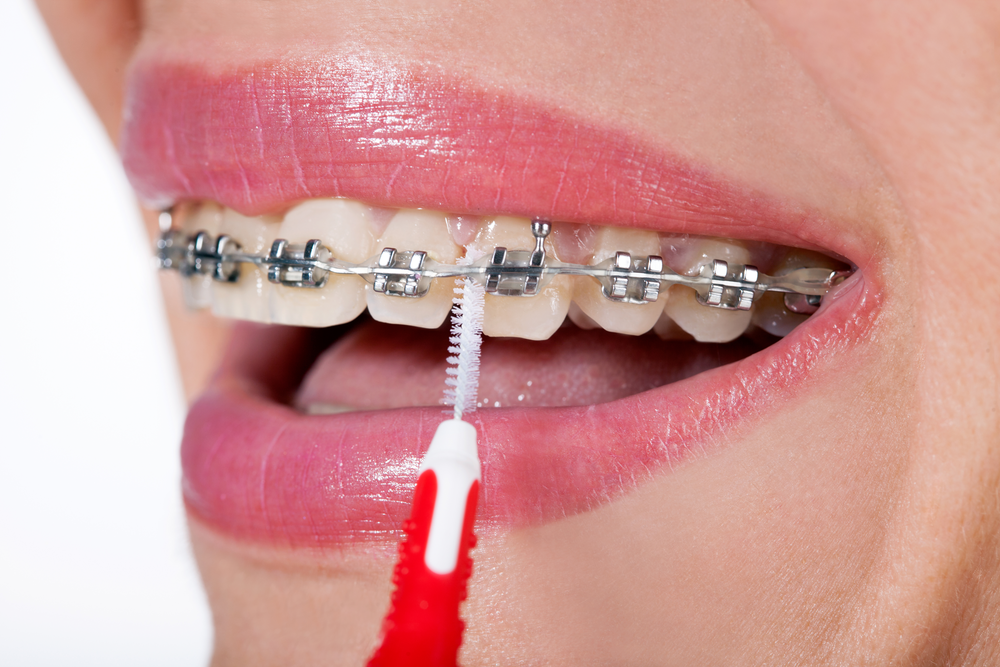
New teeth braces technology has revolutionized the way we straighten our smiles, offering a world of options beyond traditional metal braces. From virtually invisible aligners to self-ligating brackets, advancements in materials, design, and digital technology have made orthodontic treatment more comfortable, efficient, and aesthetically pleasing than ever before.
This new wave of innovation has brought about a range of benefits, including shorter treatment times, improved comfort, and enhanced oral hygiene. Whether you’re seeking a discreet solution or a faster path to a straighter smile, new teeth braces technology has something to offer everyone.
Evolution of Teeth Braces Technology
The journey of teeth braces technology has been marked by remarkable advancements, transforming from rudimentary metal appliances to sophisticated systems that deliver greater comfort, efficiency, and aesthetic appeal. This evolution has been driven by continuous innovation, addressing challenges and enhancing patient experience.
Historical Development of Teeth Braces
The earliest forms of teeth braces, dating back to ancient civilizations, were rudimentary and primarily focused on addressing cosmetic concerns.
- Ancient Egyptians used wires and ligatures made from animal intestines to reposition teeth.
- The Etruscans, known for their dentistry, employed gold bands to align teeth.
These early methods lacked precision and were often uncomfortable.
The Birth of Modern Braces
The 18th century witnessed the emergence of modern orthodontics.
- French dentist Pierre Fauchard, often referred to as the “father of modern dentistry,” published a treatise in 1728 that included detailed descriptions of orthodontic appliances.
- In the 19th century, advancements in metallurgy and dentistry led to the development of metal bands and wires, which were used to apply controlled force to teeth.
The Metal Braces Era
Metal braces, the dominant form of orthodontic treatment for decades, became increasingly sophisticated.
- The introduction of stainless steel in the 1950s significantly improved the strength and durability of braces.
- The development of the edgewise archwire system in the 1960s allowed for greater precision and control over tooth movement.
While effective, metal braces were often associated with discomfort, noticeable aesthetics, and frequent adjustments.
Ceramic Braces: A Shift Towards Aesthetics
In the late 20th century, the focus shifted towards aesthetics, leading to the development of ceramic braces.
- Ceramic braces, made from tooth-colored materials, offered a more discreet alternative to metal braces.
- These braces were less noticeable, particularly for adults who preferred a more subtle treatment option.
The Rise of Clear Aligners: A Revolution in Orthodontics
The advent of clear aligners, such as Invisalign, marked a significant turning point in teeth braces technology.
- Clear aligners are removable, custom-made plastic trays that gradually shift teeth into the desired position.
- They offer a highly discreet and comfortable treatment option, eliminating the need for metal brackets and wires.
Clear aligners have gained immense popularity, particularly among adults seeking a more aesthetically pleasing and convenient orthodontic solution.
Advancements in Materials and Technology
The field of orthodontics continues to evolve with advancements in materials and technology.
- Self-ligating braces, which eliminate the need for elastic ligatures, offer improved comfort and reduced friction.
- Digital scanning and computer-aided design (CAD) technologies are being used to create highly customized braces and aligners, enhancing precision and treatment effectiveness.
These advancements have significantly improved treatment outcomes, shortened treatment duration, and increased patient satisfaction.
Impact of Advancements
The evolution of teeth braces technology has had a profound impact on the field of orthodontics.
- Improved treatment effectiveness: Advancements in materials and technology have enabled more precise tooth movement, resulting in more predictable and successful treatment outcomes.
- Enhanced patient comfort: The shift from metal braces to clear aligners and self-ligating braces has significantly reduced discomfort and improved patient experience.
- Increased aesthetics: The availability of discreet and aesthetically pleasing treatment options, such as ceramic braces and clear aligners, has made orthodontic treatment more accessible to a wider range of patients, particularly adults who are concerned about the appearance of traditional metal braces.
These advancements have made orthodontic treatment more effective, comfortable, and aesthetically appealing, ultimately leading to greater patient satisfaction.
Types of New Teeth Braces Technology
The field of orthodontics has witnessed remarkable advancements in recent years, leading to the development of innovative teeth braces technologies that offer enhanced comfort, efficiency, and aesthetic appeal. These new technologies cater to diverse patient needs and preferences, providing a wider range of options for achieving a beautiful and healthy smile.
New teeth braces technology is constantly evolving, offering more comfortable and efficient ways to straighten your smile. From self-ligating brackets to 3D printed aligners, these advancements are making orthodontic treatment more accessible and convenient. But it’s not just the braces themselves that are getting a tech upgrade, the entire process is becoming streamlined thanks to easy technology solutions that make scheduling appointments, tracking progress, and communicating with your orthodontist simpler.
This means less time worrying about logistics and more time focusing on achieving that perfect smile.
Types of New Teeth Braces Technology
Here are some of the prominent types of new teeth braces technology currently available, along with their advantages and disadvantages:
| Type of Braces | Description | Advantages | Disadvantages |
|---|---|---|---|
| Clear Aligners | Clear aligners are removable, custom-made trays made from transparent plastic that gradually shift teeth into their desired positions. They are virtually invisible, making them a popular choice for adults and teenagers who want a discreet orthodontic treatment. |
|
|
| Self-Ligating Braces | Self-ligating braces use a unique clip mechanism to hold the archwire in place, eliminating the need for elastic ligatures. This design allows for smoother and more efficient tooth movement. |
|
|
| Lingual Braces | Lingual braces are attached to the back of the teeth, making them completely invisible. They are custom-made to fit the unique contours of the patient’s teeth. |
|
|
| Ceramic Braces | Ceramic braces are made from tooth-colored ceramic material, making them less noticeable than traditional metal braces. They are a popular choice for adults and teenagers who want a more aesthetically pleasing option. |
|
|
Benefits of New Teeth Braces Technology
The evolution of teeth braces technology has brought about a plethora of advancements, leading to more effective, comfortable, and aesthetically pleasing treatment options. Compared to traditional braces, modern technologies offer a range of advantages that enhance the overall orthodontic experience.
Improved Aesthetics and Reduced Visibility
The aesthetic appeal of orthodontic treatment has significantly improved with the introduction of new technologies. Traditional metal braces were often perceived as noticeable and could affect a person’s self-confidence. However, new technologies have revolutionized the way braces look, offering discreet and less visible options.
- Clear Aligners: Aligners made from transparent, medical-grade plastic are virtually invisible when worn, making them an ideal choice for individuals who prioritize aesthetics. They are removable, allowing for easy cleaning and eating, further contributing to their discreet nature.
- Ceramic Braces: These braces are made from tooth-colored ceramic materials that blend seamlessly with the natural teeth, making them less noticeable than traditional metal braces. While ceramic braces are slightly larger than clear aligners, they still offer a more aesthetically pleasing alternative.
- Lingual Braces: These braces are attached to the back of the teeth, making them completely invisible from the front. While they are more expensive and require a longer adjustment period, they offer the ultimate discretion for those who want their braces to remain hidden.
Increased Comfort and Reduced Discomfort
New technologies have significantly improved the comfort of orthodontic treatment, minimizing the discomfort associated with traditional braces.
- Self-Ligating Braces: These braces use a clip or spring to hold the wire in place, eliminating the need for elastic ties. This reduces friction, resulting in less pressure on the teeth and gums, leading to increased comfort and reduced pain.
- Clear Aligners: Aligners are made from smooth, flexible plastic that conforms to the shape of the teeth, reducing the risk of irritation or sores. They are also removable, allowing for easy cleaning and eating, further enhancing comfort.
- Advanced Wire Technology: Modern wires are made from advanced materials that are more flexible and less prone to breakage. This reduces the need for frequent adjustments, resulting in less pressure on the teeth and improved comfort.
Shorter Treatment Duration
Modern orthodontic technologies have made it possible to achieve desired results in a shorter timeframe.
- Clear Aligners: Aligners are designed to move teeth more efficiently than traditional braces, often resulting in a shorter treatment duration. The ability to switch to a new aligner every few weeks allows for more precise tooth movement, leading to faster results.
- Advanced Software and 3D Printing: Sophisticated software programs and 3D printing technologies allow orthodontists to create customized treatment plans that are more accurate and efficient. This personalized approach can help to shorten the overall treatment time.
- Self-Ligating Braces: The reduced friction in self-ligating braces allows for more efficient tooth movement, potentially leading to a shorter treatment duration compared to traditional braces.
Enhanced Oral Hygiene and Reduced Plaque Accumulation
Maintaining good oral hygiene is crucial during orthodontic treatment, and new technologies have made it easier to keep teeth clean.
- Clear Aligners: Aligners are removable, allowing for easy brushing and flossing. This makes it easier to maintain good oral hygiene and reduce the risk of plaque buildup and cavities.
- Self-Ligating Braces: The absence of elastic ties in self-ligating braces reduces the areas where food and plaque can accumulate, making it easier to clean the teeth and prevent cavities.
Increased Treatment Accuracy and Predictability
Modern technologies have significantly improved the accuracy and predictability of orthodontic treatment, allowing orthodontists to achieve more precise results.
- Digital Imaging and 3D Scanning: Digital imaging and 3D scanning technologies provide orthodontists with detailed and accurate images of the teeth and jaws, allowing them to create more precise treatment plans.
- Advanced Software Programs: Sophisticated software programs can simulate tooth movement and predict the final outcome of treatment, enabling orthodontists to create more accurate and predictable treatment plans.
- Clear Aligners: Aligners are manufactured using digital impressions and 3D printing, ensuring a precise fit and controlled tooth movement, leading to more predictable results.
How New Teeth Braces Technology Works

The latest innovations in teeth braces technology leverage advanced materials, digital technology, and biomechanics to achieve faster, more comfortable, and aesthetically pleasing orthodontic treatment. These technologies work by applying controlled forces to teeth, gradually moving them into their desired positions. The underlying principles behind these technologies involve understanding the biological response of teeth to pressure and utilizing sophisticated tools to precisely control the forces applied.
Self-Ligating Brackets
Self-ligating brackets, a key advancement in traditional braces, eliminate the need for elastic ligatures. These brackets use a built-in clip or latch to hold the archwire in place, reducing friction and allowing for smoother tooth movement. The reduced friction results in less pressure on the teeth, leading to potentially faster treatment times and increased comfort. Self-ligating brackets come in both metal and ceramic varieties, offering a range of aesthetic options.
Clear Aligners
Clear aligners, like Invisalign, are a revolutionary alternative to traditional braces. These custom-made, transparent aligners are made from a durable plastic material and are designed to gradually shift teeth into their desired positions. The aligners are removable, allowing for easy cleaning and convenient eating. Each aligner in a series is worn for a specific period, typically 1-2 weeks, before being replaced with the next aligner in the sequence. The aligners exert pressure on teeth through a combination of controlled force and precise aligner placement.
Lingual Braces
Lingual braces are a discreet alternative to traditional braces, as they are placed on the back of the teeth, making them virtually invisible. These braces are custom-made to fit the contours of the patient’s teeth, ensuring a comfortable and aesthetically pleasing experience. The mechanics of lingual braces are similar to traditional braces, using brackets and archwires to apply pressure and move teeth. The primary difference lies in the placement of the braces, which requires specialized expertise and advanced technology to ensure accurate and effective treatment.
Digital Technology
Digital technology plays a crucial role in modern orthodontic treatment, enabling precise planning, monitoring, and personalized care. Digital imaging, such as 3D scans, allows for the creation of detailed models of the patient’s teeth and jaw, facilitating accurate diagnosis and treatment planning. Software programs utilize this data to generate personalized treatment plans, simulate tooth movements, and create custom-made aligners or braces. Digital monitoring systems allow orthodontists to track progress and make adjustments to treatment plans as needed, ensuring optimal results.
Applications of New Teeth Braces Technology

New teeth braces technology offers a wide range of applications, effectively addressing various dental issues and improving oral health. These advancements have revolutionized orthodontic treatment, making it more efficient, comfortable, and aesthetically pleasing.
Correction of Malocclusion
Malocclusion, or misaligned teeth, is a common dental problem that can affect both aesthetics and functionality. New teeth braces technology provides effective solutions for correcting various types of malocclusion.
- Class I Malocclusion: In this type, the upper and lower teeth are properly aligned but may have issues like crowding or spacing. New braces technology can effectively address these concerns, aligning the teeth and improving their overall appearance.
- Class II Malocclusion: This type involves an overbite, where the upper teeth protrude significantly over the lower teeth. New braces technology can effectively correct this by gently pushing the upper teeth back, improving the bite and facial aesthetics.
- Class III Malocclusion: This type involves an underbite, where the lower teeth protrude over the upper teeth. New braces technology can address this by gently moving the lower teeth back, improving the bite and facial aesthetics.
Treatment of Crowded Teeth
Crowded teeth, a common issue, can lead to difficulty in cleaning, increased risk of cavities, and an aesthetically unappealing appearance. New teeth braces technology offers efficient solutions for treating crowded teeth.
- Clear Aligners: These custom-made, removable aligners are designed to gently shift teeth into their desired positions. Their transparency makes them virtually invisible, making them a popular choice for adults concerned about aesthetics.
- Self-Ligating Braces: These braces use a unique locking mechanism that eliminates the need for traditional elastic ties, reducing friction and allowing for faster tooth movement. They are also more comfortable and require fewer adjustments.
Closure of Gaps Between Teeth
Gaps between teeth, also known as diastemas, can be a source of concern for many individuals. New teeth braces technology provides effective solutions for closing these gaps, improving aesthetics and oral health.
- Lingual Braces: These braces are placed on the back of the teeth, making them virtually invisible. They are ideal for adults who want discreet orthodontic treatment.
- Ceramic Braces: These braces are made from tooth-colored ceramic material, making them less noticeable than traditional metal braces. They are a popular choice for those seeking a more aesthetically pleasing option.
Alignment of Crooked Teeth
Crooked teeth can affect aesthetics, bite function, and even speech. New teeth braces technology provides effective solutions for aligning crooked teeth, improving oral health and confidence.
- Invisalign: This system uses a series of clear aligners that are custom-made for each patient’s teeth. They are removable, making them easy to clean and maintain, and their transparency makes them virtually invisible.
- Damon Braces: These braces use a self-ligating system that reduces friction and allows for faster tooth movement. They are also more comfortable and require fewer adjustments.
Improvement of Bite and Jaw Function
A proper bite is crucial for efficient chewing, speech, and overall oral health. New teeth braces technology can effectively improve bite and jaw function, addressing issues like overbites, underbites, and crossbites.
- Functional Appliances: These appliances are designed to guide jaw growth and development, correcting bite problems and improving facial aesthetics. They are often used in children and adolescents.
- Orthognathic Surgery: In cases of severe bite problems, orthognathic surgery may be necessary to reposition the jawbones. New technologies in this field have made the procedure more precise and less invasive.
Considerations for Choosing New Teeth Braces Technology
Choosing the right teeth braces technology is a crucial decision that involves careful consideration of various factors. It’s essential to find a balance between effectiveness, comfort, aesthetics, and affordability. The decision-making process should be a collaborative effort between the patient and the orthodontist, ensuring that the chosen technology aligns with individual needs and preferences.
Individual Dental Needs and Goals
Understanding the patient’s specific dental needs and goals is paramount in selecting the most appropriate braces technology. For example, patients with complex malocclusions may require more advanced technology, while those with minor misalignments may benefit from simpler options.
- Severity of Malocclusion: The severity of the malocclusion plays a significant role in determining the type of braces technology required. Severe malocclusions may necessitate advanced technologies like self-ligating braces or Invisalign, while minor misalignments can be addressed with traditional metal braces.
- Desired Outcome: Patients’ desired outcomes should also be considered. For instance, patients seeking a discreet treatment option may opt for ceramic or lingual braces, while those prioritizing speed and efficiency may prefer self-ligating braces.
Age and Health Status of the Patient
The age and overall health of the patient are important factors that can influence the choice of braces technology.
- Age: Younger patients may be more comfortable with traditional metal braces, while adults may prefer more aesthetically pleasing options like ceramic or Invisalign.
- Health Status: Certain medical conditions, such as allergies or sensitivities, may necessitate specific types of braces. For example, patients with nickel allergies may require braces made of titanium or other hypoallergenic materials.
Budget and Insurance Coverage
Financial considerations are often a significant factor in choosing braces technology. Different types of braces vary in cost, and patients need to factor in their budget and insurance coverage.
- Cost: Traditional metal braces are generally the most affordable option, while newer technologies like Invisalign and lingual braces can be more expensive.
- Insurance Coverage: Many insurance plans cover orthodontic treatment, but the level of coverage may vary depending on the plan. Patients should check their insurance benefits to determine what types of braces are covered and what portion of the cost they will be responsible for.
Lifestyle and Preferences
Patients’ lifestyles and preferences can influence the choice of braces technology.
- Lifestyle: Active individuals who participate in sports or other physical activities may prefer braces that are less likely to cause discomfort or interfere with their activities.
- Preferences: Some patients may prefer the aesthetics of clear or ceramic braces, while others may prefer the traditional look of metal braces.
Future Trends in Teeth Braces Technology
The field of orthodontics is constantly evolving, with advancements in technology paving the way for more effective, comfortable, and aesthetically pleasing treatment options. These advancements are driven by a desire to improve patient experiences, reduce treatment time, and achieve optimal results. Here are some key future trends that are shaping the landscape of teeth braces technology.
Development of Even More Comfortable and Aesthetically Pleasing Braces
The development of more comfortable and aesthetically pleasing braces is a key area of focus in orthodontics. As technology advances, the goal is to minimize the discomfort and visibility associated with traditional braces. This includes:
- Clear Aligners: Clear aligners, such as Invisalign, have gained immense popularity due to their discreet nature and comfort. They are made from smooth, transparent plastic that fits snugly over the teeth, making them virtually invisible. Advancements in aligner technology are leading to even more comfortable and effective treatments, with improvements in material properties and aligner design.
- Self-Ligating Brackets: Self-ligating brackets, which use a clip instead of rubber bands to hold the archwire in place, are becoming increasingly popular. They are said to be more comfortable and efficient, as they reduce friction and allow for smoother tooth movement. There are also aesthetic options available, such as ceramic brackets that blend in with the natural color of teeth.
- Lingual Braces: Lingual braces are placed on the back of the teeth, making them completely invisible. While they are more complex to install and adjust, they offer a discreet alternative for patients who are concerned about the appearance of traditional braces. Advancements in lingual brace technology are leading to more comfortable and effective treatments, with improvements in bracket design and wire technology.
Incorporation of Artificial Intelligence and Machine Learning for Personalized Treatment Plans, New teeth braces technology
Artificial intelligence (AI) and machine learning (ML) are revolutionizing many industries, and orthodontics is no exception. These technologies can analyze vast amounts of data to create personalized treatment plans that are tailored to each patient’s unique needs. AI-powered tools can:
- Analyze 3D scans and images: AI algorithms can analyze 3D scans and images of a patient’s teeth to identify specific orthodontic problems and create a detailed 3D model of their mouth.
- Predict treatment outcomes: AI can predict how teeth will move during treatment, allowing orthodontists to create more accurate and effective treatment plans.
- Personalize treatment plans: AI can create personalized treatment plans that consider factors such as the patient’s age, bite, and facial structure.
- Optimize treatment time: AI can help orthodontists optimize treatment time by identifying the most efficient ways to move teeth.
Advancements in 3D Printing and Digital Modeling for Customized Braces
3D printing and digital modeling are playing an increasingly important role in orthodontics. These technologies allow orthodontists to create custom-made braces that are tailored to each patient’s unique needs. Some benefits of using 3D printing in orthodontics include:
- Customized Brackets: 3D printing allows orthodontists to create custom-made brackets that fit perfectly on each tooth, leading to more comfortable and efficient treatment.
- Improved Accuracy: 3D printing ensures greater accuracy in bracket placement, resulting in more predictable and effective tooth movement.
- Reduced Treatment Time: 3D printing can reduce the time it takes to create and install braces, leading to faster treatment times.
- Improved Aesthetics: 3D printing allows for the creation of custom-made clear aligners that are virtually invisible.
Integration of Smart Technologies for Remote Monitoring and Treatment Adjustments
Smart technologies are also being integrated into orthodontics, enabling remote monitoring and treatment adjustments. This includes:
- Smart Braces: Smart braces are equipped with sensors that track tooth movement and transmit data to a mobile app. This allows orthodontists to monitor progress remotely and make adjustments to the treatment plan as needed.
- Telemedicine: Telemedicine is becoming increasingly common in orthodontics, allowing patients to consult with their orthodontist remotely via video conferencing. This can reduce the need for in-person appointments and make treatment more convenient.
Final Summary
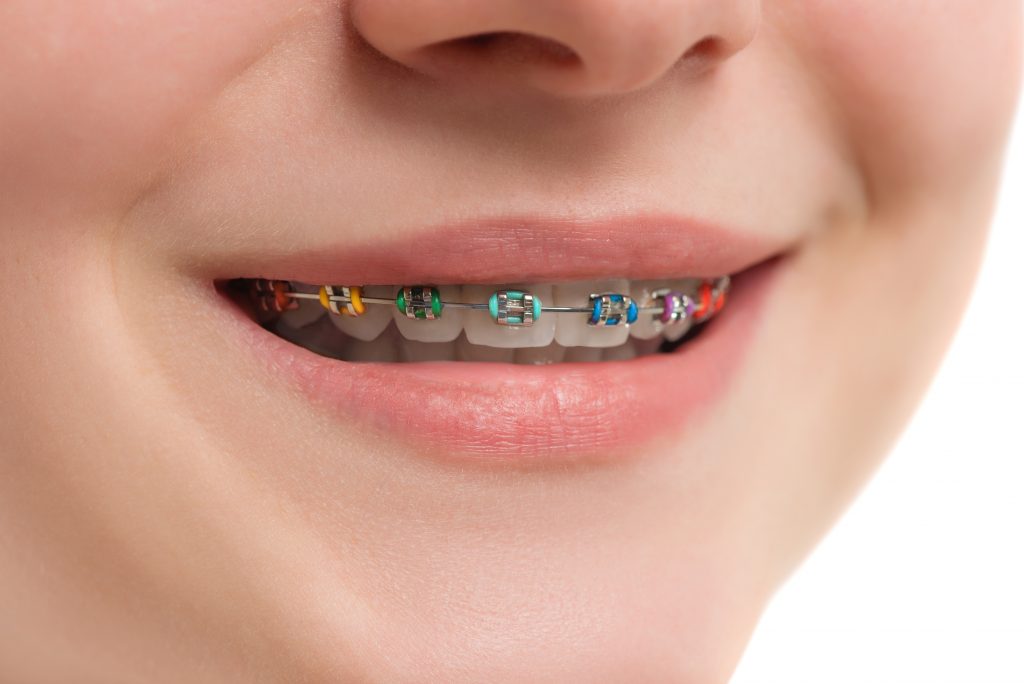
As technology continues to evolve, the future of teeth braces holds even more exciting possibilities. From AI-powered treatment plans to personalized 3D printed braces, the quest for a perfect smile is becoming increasingly streamlined and accessible. Whether you’re considering braces for yourself or a loved one, understanding the latest advancements in teeth braces technology can empower you to make informed decisions about your oral health and achieve the smile of your dreams.
